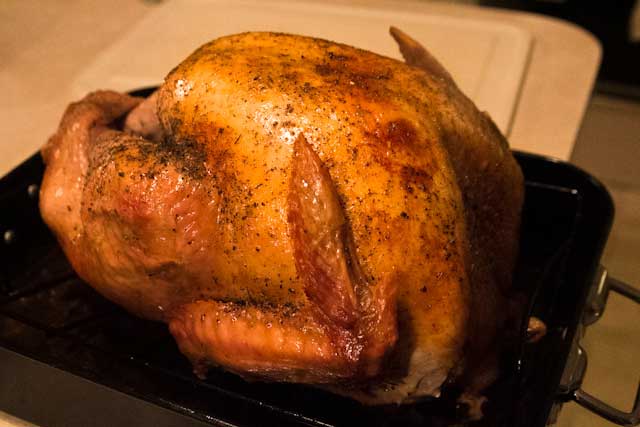Thanksgiving wouldn’t be complete without the star of the meal – the turkey! But for some people, perfecting their turkey recipe can seem like a challenge. Thankfully, pellet grills can help you make your own delicious smoked turkey.
Pellet grills are those types of grills that produce heat with the help of wood pellets. These grills smoke your turkey perfectly, giving it a rich and smoky flavor.
The flavor will usually depend on the type of wood pellets that you’re going to use. If you’re not sure how to smoke a turkey on a pellet grill, then here are some tips to help you with it.

In this post we'll cover:
How to smoke Turkey On A Pellet Grill
So here’s how to smoke your turkey using a pellet grill.
- First, you need to set the grill to the right temperature, which should be around 275°F. You can choose to increase the temperature to as much as 325 °F if you want to ensure that the inside parts are fully cooked.
- Next, place the turkey in an aluminum pan. Although it’s also possible to place it directly into the grates, placing it into the disposable pan can help to prevent the turkey from getting dry. When placing the turkey in the pellet grill, make sure you place it in a way that the breast is facing up since this is its thickest part. Otherwise, the turkey will be undercooked.
- Refer to your timer and set it to 90 minutes. When the timer goes off, set the temperature to 350 °F and leave the turkey to cook for 60-90 minutes more in order to allow for the smoke flavor to be seeped by the meat.
Related: Where to Put Thermometer in Turkey
In order for the skin to be crispy, try to use two different temperature settings. Check the internal temperature of the turkey by using a meat thermometer. When the temperature is at least 170 °F, then that means the bird is already cooked. Make sure to place the thermometer at the thickest portion of the poultry.
FAQ
How Long Does It Take to Smoke a 12 Pound Turkey at 225 Degrees?
If you are smoking a 12-pound turkey at a low temperature between the temperature range of 225 and 250 degrees, you can expect for it to be cooked around 6 hours. That’s because, in this range, the turkey is expected to smoke one pound in every 30 minutes.
How Do You Smoke a Turkey on a Traeger Grill?
First, take the turkey out from the fridge. Remove the giblet, tuck the wings, and then truss the legs. To start cooking, simply set the Traeger grill to 225 °F and preheat the grill. Make sure that the lid is closed and it should remain that way for around 15 minutes. Then place the turkey at the roasting pan and into the grate of the grill. Cook until the temperature reaches 100-110°F.
How Long Does It Take to Smoke a Turkey in a Smoker?
When smoking an entire turkey, you should ideally set the smoker to 240 °F. The cooking time will depend upon its weight, which is 30 to 40 minutes per pound. Thus, an 8-pound turkey should approximately take around 4 hours!
How Long Does It Take to Smoke a Turkey at 275 Degrees?
For a temperature of 275 degrees, it’s recommended to cook the turkey for around 20 to 25 minutes per pound. Therefore, if you’re smoking an 8-pound turkey, it should be done in 3 hours or less. Make sure you let the smoked turkey cool before you brine it.
Related: Best Way to Reheat Turkey
